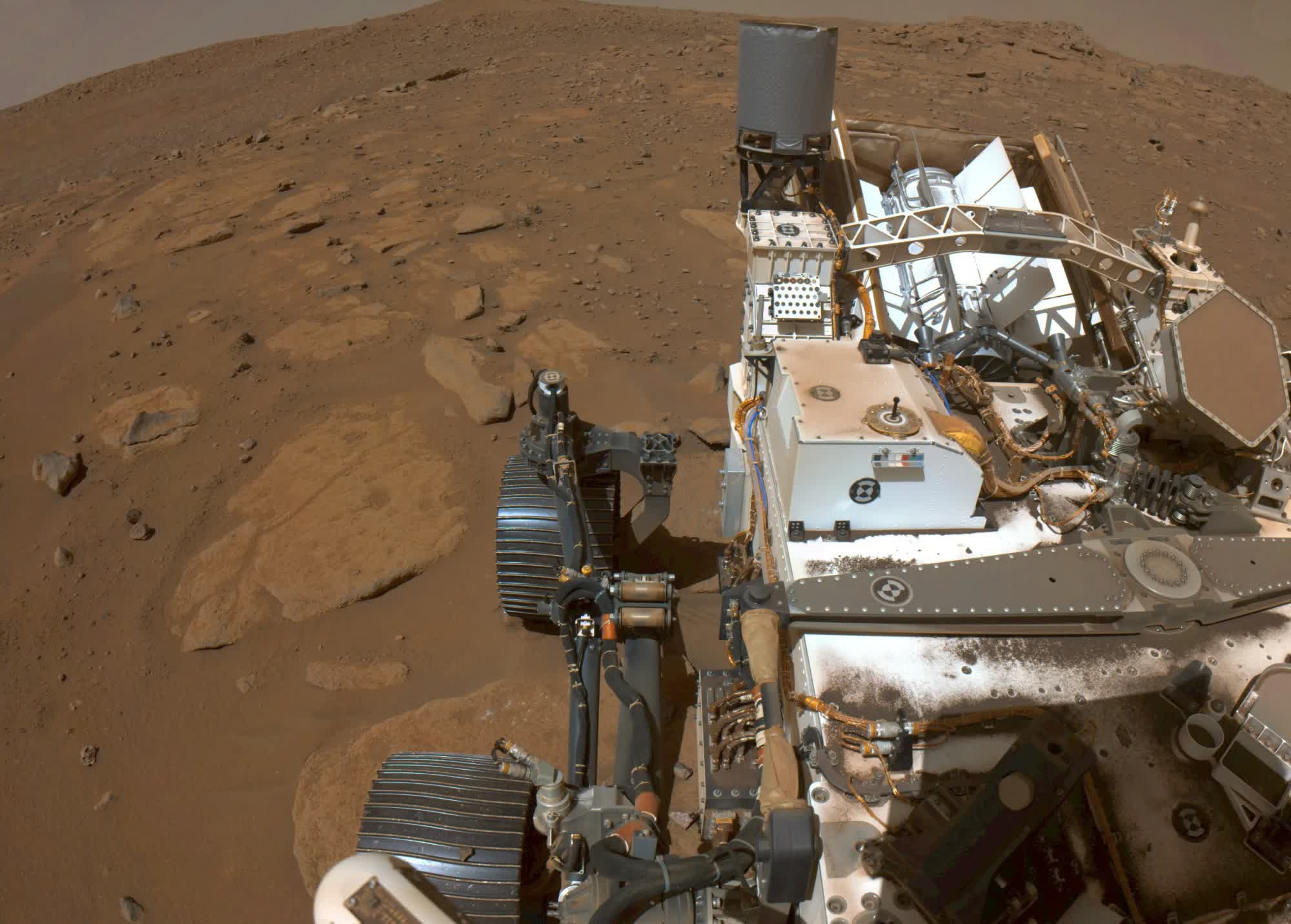What just happened? NASA's fleet of rovers on Mars is taking a two-week vacation from their regular duties due to a planned communications pause. It's not a full-on rest, however, as the machines will still be conducting some science while parked.
The Mars solar conjunction happens every two years, and occurs when the Red Planet and Earth are on opposite sides of the Sun. During this time, NASA stops sending radio signals to spacecraft on Mars as the hot, ionized gas from the Sun's corona could potentially corrupt the signals and lead to all sorts of unexpected behavior.
Rather than risk the missions, NASA elected to park the spacecraft during the solar conjunction and let them work stationary. From now through the end of the month, the Perseverance and Curiosity rovers will instead monitor changes in surface conditions, and keep an eye on the Martian weather and radiation as they wait. The Mars Reconnaissance Orbiter and the Odyssey orbiter, meanwhile, will continue to image the surface of the Red Planet during their break.
It will be mostly business as usual for NASA's Maven spacecraft, as it'll continue collecting data on interactions between the planet's atmosphere and the Sun.
NASA said it usually receives status updates from its fleet during conjunction, but noted there will be a two-day period of total radio silence when Mars is completely behind the Sun.
Once the communications quiet period ends, the craft will reestablish their connections and beam everything they have collected back to Earth. NASA will also be able to send commands to the rovers and probes for the first time in a couple weeks.
Roy Gladden, manager of the Mars Relay Network at NASA's Jet Propulsion Laboratory in Southern California, said they have spent months preparing a to-do list for the Mars fleet. Having the hardware sit idle would be a waste as they only have a finite amount of operational time, so you might as well make the most of it.
The Mars solar conjunction wraps up on November 25.
